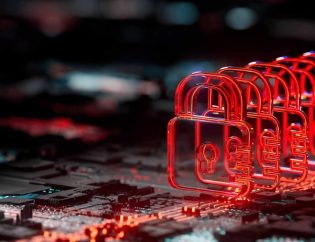
Introduction
Anti-piracy refers to a range of measures and strategies implemented to combat the illegal use and distribution of copyrighted content. In today’s digital landscape, where content is easily shared and copied, understanding how anti-piracy works is crucial for creators, businesses and consumers alike. This article will explore various techniques, strategies and technologies employed to protect intellectual property effectively, providing a comprehensive overview of the current landscape.
Protect your digital assets with robust anti-piracy solutions! Safeguard content, prevent unauthorized sharing, and maintain your competitive edge. Don’t let piracy steal your hard work. #CyberSecurity #AntiPiracy
— Hyper Secure (@HyperSecure) November 7, 2024
Understanding Anti-Piracy
Anti-piracy encompasses a collection of practices aimed at preventing the unauthorized use of copyrighted materials. This includes various forms of media, such as movies, music, software and literature. With the rise of the internet and digital technology, piracy has become more common and sophisticated, leading to significant revenue losses for creators and companies. Moreover, it undermines the integrity of creative work and discourages future innovation. Therefore, understanding how does anti-piracy work is essential for both individuals and organizations involved in content creation and distribution.
Piracy does not solely affect creators; it also has broader economic implications. According to various studies, piracy can lead to billions of dollars in losses annually, impacting industries worldwide. For example, the software industry alone estimates losses of over $46 billion due to piracy each year. Thus, combating piracy is vital for maintaining a thriving economic environment where creativity can flourish and encourage new ideas.
How Does Anti-Piracy Work?
Anti-piracy measures work by actively monitoring and controlling how copyrighted content is distributed across various platforms. Organizations typically adopt a mix of legal, technological and educational strategies to protect their intellectual property. This can involve issuing takedown notices, utilizing digital rights management (DRM) tools and conducting awareness campaigns about the consequences of piracy. Additionally, partnerships with law enforcement agencies are often formed to strengthen enforcement efforts.
Key Components of Anti-Piracy
Monitoring:
Regularly checking online platforms for unauthorized content helps in early detection and prevention of potential piracy incidents. This monitoring can include tracking websites, social media and peer-to-peer networks where pirated content may be shared.
Legal Action:
Taking legal steps against individuals or organizations that infringe copyright ensures accountability and discourages further violations. Many content creators use cease-and-desist letters and file lawsuits to protect their rights effectively.
Education:
Raising awareness about the importance of respecting intellectual property fosters a culture of compliance among consumers. Educational initiatives can involve workshops, seminars and online resources that inform users about the legal and ethical implications of piracy.
By integrating these components into their anti-piracy strategies, organizations can effectively deter potential infringers and protect original content. Importantly, companies must adopt a proactive approach, as waiting for piracy incidents to happen can result in irreversible damage to their brands and reputations.
Key Strategies in Anti-Piracy
Several effective strategies are employed to combat piracy and here are some of the most crucial:
Legal Framework:
Many countries have established laws designed to protect intellectual property. The enforcement of these laws is essential for fighting piracy, as strong legal repercussions can deter potential offenders. For instance, the Digital Millennium Copyright Act (DMCA) in the U.S. provides legal protection for copyright holders.
Digital Rights Management (DRM):
This technology restricts access to copyrighted material and prevents unauthorized copying. DRM systems can limit the number of devices that can access the content, thereby controlling its distribution. Streaming services, for example, often use DRM to protect their films and music.
Watermarking:
Content can be embedded with identifying marks that trace its source. This technique not only deters piracy but also helps track down the original source of unauthorized copies. Watermarks can be visible or invisible, making them a flexible option for content protection.
Content ID Systems:
Platforms like YouTube utilize algorithms to detect and manage copyrighted content effectively. These systems allow content owners to monetize their work while swiftly removing unauthorized uploads, ensuring that creators receive fair compensation.
Bullet Points of Key Strategies
Technologies Used in Anti-Piracy
Anti-piracy measures utilize various technologies to combat illegal content distribution effectively. Here are some of the most prominent technologies used in the fight against piracy:
Comparison of Anti-Piracy Technologies
| Technology | Purpose | Effectiveness |
|---|---|---|
| Web Crawlers | Search for unauthorized content | High |
| Fingerprinting | Identify altered copyrighted material | Moderate to High |
| Digital Watermarking | Trace original content source | High |
| DRM | Control access to content | High |
Customer Testimonial
“Thanks to Hyper Secure’s anti-piracy measures, we’ve seen a significant drop in unauthorized content distribution. Their expertise in monitoring and legal enforcement has been invaluable for our business.”
— Jane Doe, Content Producer
How to Avoid Piracy Online
To effectively combat piracy, it is essential to understand how to avoid piracy online. Here are some best practices that can help:
Use Legitimate Sources:
Always acquire content from authorized distributors. This not only ensures quality but also supports creators financially and encourages further creativity.
Educate Users:
Promote awareness about the risks associated with piracy, both legal and ethical. Understanding the consequences can deter individuals from engaging in piracy, fostering a culture of respect for intellectual property.
Implement Security Measures:
Utilize anti-piracy technologies to protect your content. Regular monitoring and swift action against infringements are vital for maintaining control and ensuring that unauthorized use is minimized.
By following these best practices, both consumers and creators can contribute to a more sustainable and respectful digital environment, ultimately benefiting everyone involved in the creative process.
Conclusion
In summary, understanding how anti-piracy works is essential for protecting intellectual property in today’s digital world. As a leading cybersecurity services company, Hyper Secure provides advanced solutions to effectively combat piracy and safeguard your digital assets. Our expertise helps you navigate the complexities of anti-piracy, ensuring your content stays protected, so you can concentrate on what you do best—creating.
FAQs
1. What is anti-piracy?
Anti-piracy refers to measures taken to prevent the unauthorized use of copyrighted material, protecting creators’ rights and revenue.
2. How do anti-piracy measures work?
They work by monitoring content distribution, enforcing copyright laws and utilizing technology like DRM to deter and manage piracy.
3. Why is anti-piracy important?
It protects creators’ rights and revenues, ensuring fair compensation for their work while fostering innovation in various industries.
4. What technologies are used in anti-piracy?
Common technologies include web crawlers, fingerprinting, digital watermarking and DRM to identify and track unauthorized content.
5. How to avoid piracy online?
Use legitimate sources, educate users about piracy risks and rely on an Anti Piracy Company to safeguard your content with robust monitoring and detection tools.

